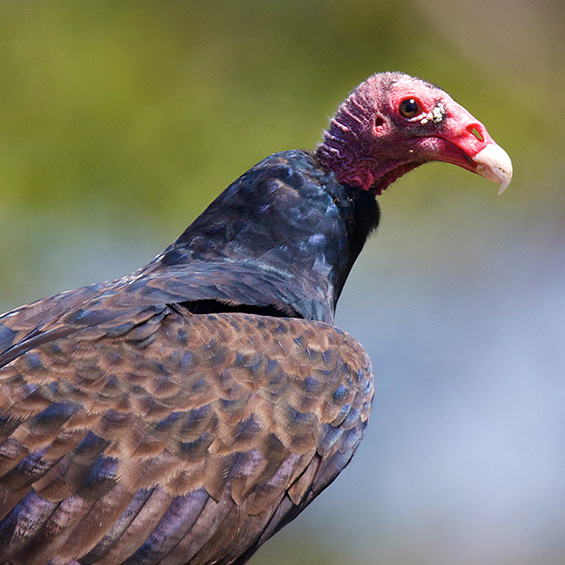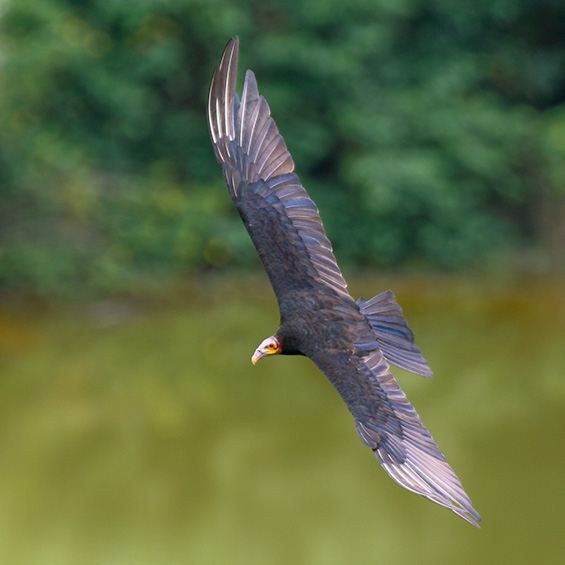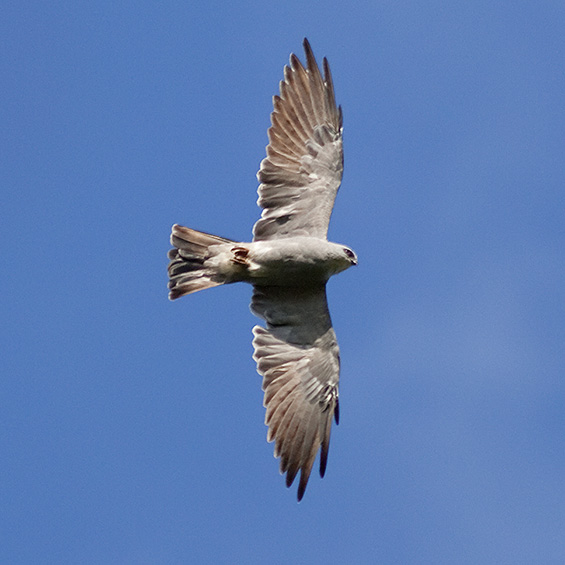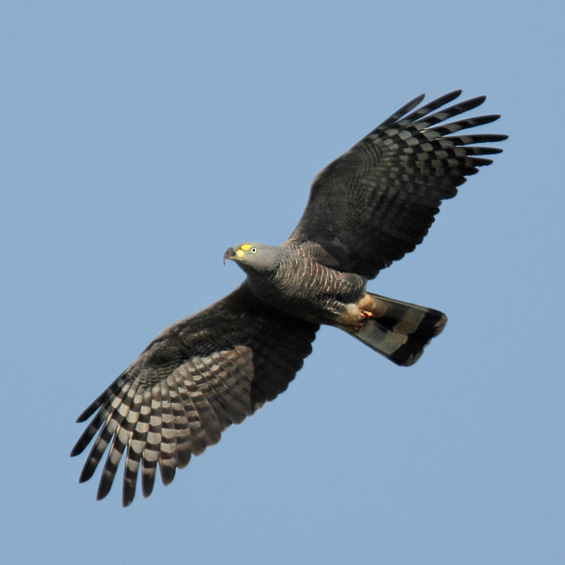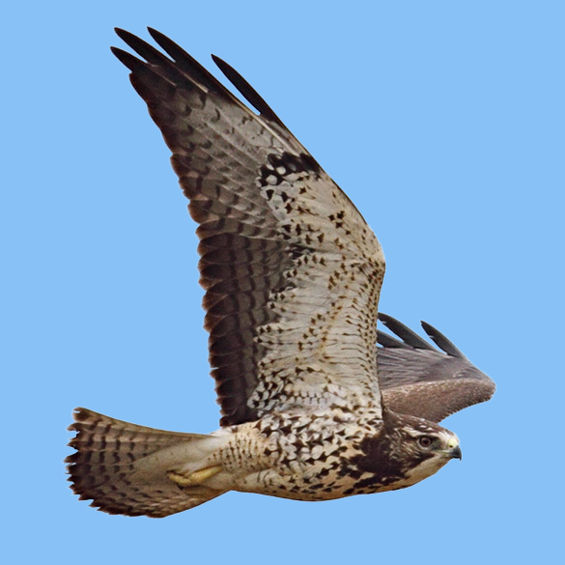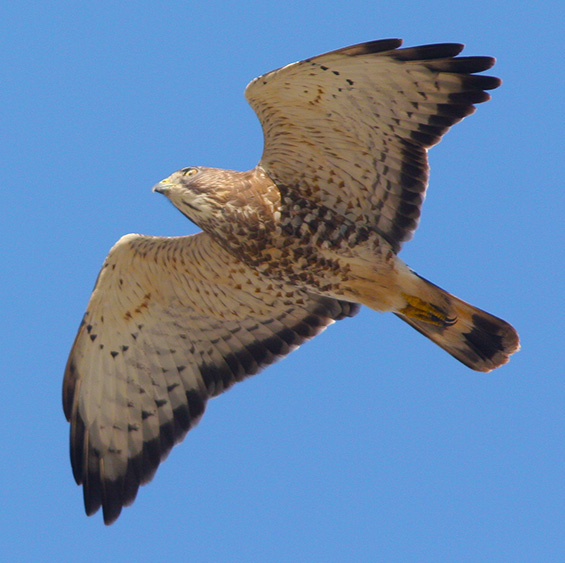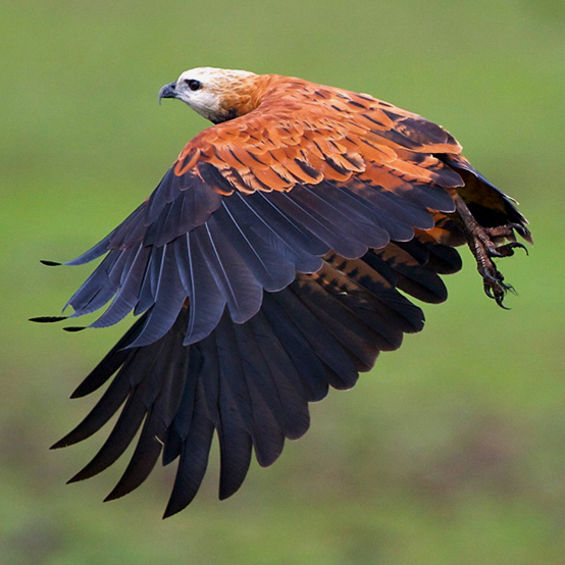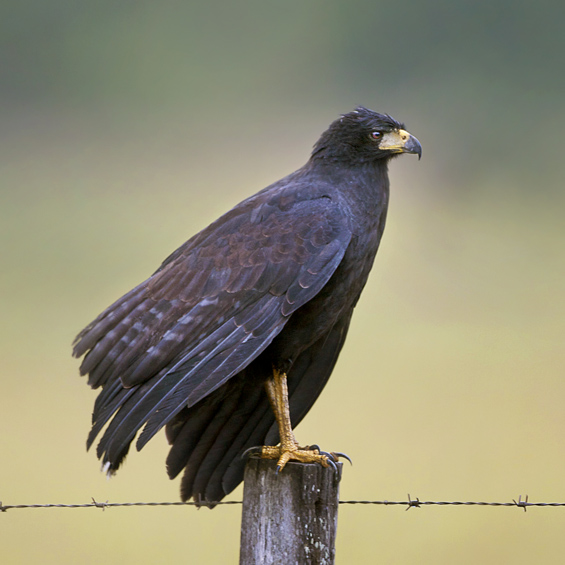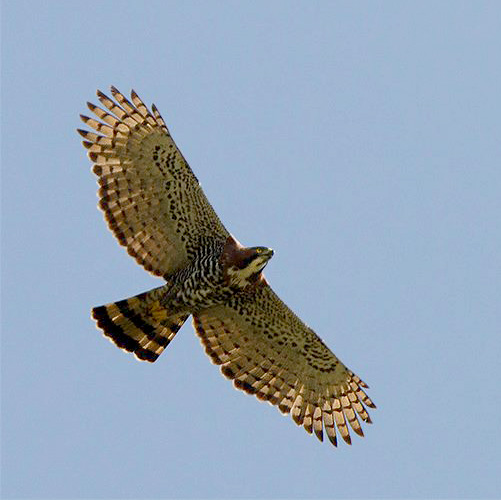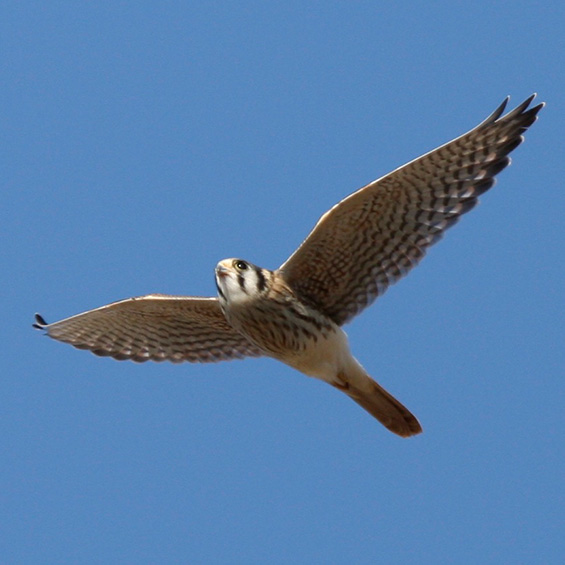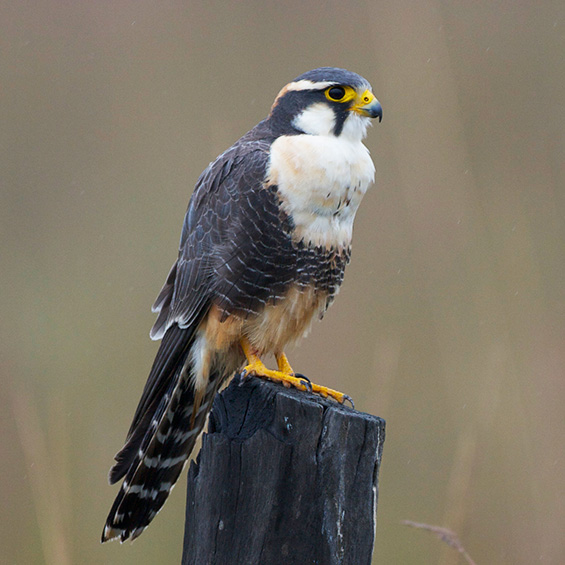Veracruz River of Raptors Tour
Veracruz River of Raptors Tour
Share this!
Every day of the trip offered varied avian rewards but the immensity of the migration on the peak days was the highlight of the trip and an experience beyond description.”
Frank Maher, USA. 2014 Edition
"Zach is very knowledgeable and is a very good spotter of rare stuff. We have seen loads of odd things with so many birds to screen through because of him."
Don Bryant, USA, 2017 Edition
Watch the largest raptor migration on Earth!
The world’s largest raptor count of between four and seven million migrating raptors have been recorded per season in recent years at Veracruz, on the coast of the Gulf of Mexico. Most were Swainson’s Hawks, Broad-winged Hawks, and Turkey Vultures, but many other species are also tallied in smaller numbers. We saw over a million in four days on an earlier tour. We will sample this migration, as well as the great variety of Neotropical raptors found nearby.
The perfect Raptor Vacation
Tour is conducted at a relaxed pace with lots of time to look at raptors (and other birds), plenty of time to relax at hotels, walk along beaches and nature trails looking for birds, or enjoy your drink while you watch the migration from the very hotel’s rooftop! Meet fellow hawkwatchers from all over the world at count sites and learn about the River of Raptors first hand.
Not just Raptors! General birding too
While Central Veracruz is best known for raptor migration, general birding in the region is nothing short of spectacular. Temperate and tropical species intermingle at coastal beaches, lagoons, wetlands, grasslands and lowland forests.
Numerous migratory birds can be seen here in staggering numbers, including American White Pelican, Wood Stork, White-faced Ibis, White-winged Dove, Scissor-tailed Flycatcher, Eastern Kingbird and Dickcissel. The impressive diversity of resident species means there is always something at which to look — Magnificent Frigatebird, Bare-throated Tiger-Heron, Northern Jacana, White-fronted Parrot, Squirrel Cuckoo, Blue-crowned Motmot, Canivet's Emerald (endemic), Violaceous Trogon, Green Kingfisher, Boat-billed Flycatcher, Fork-tailed Flycatcher (austral migrant), Masked Tityra, Mangrove Swallow, Rufous-naped Wren (endemic), Red-throated Ant-Tanager and Montezuma Oropendola are but a small subset of birds commonly seen in Central Veracruz.
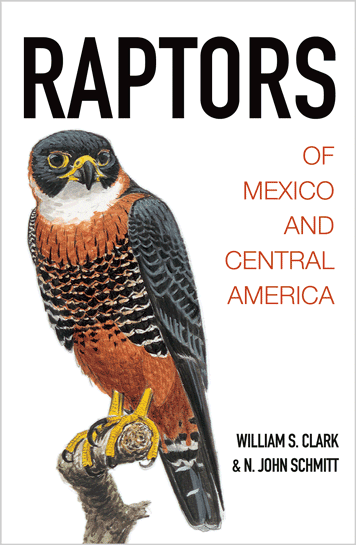
Get up to speed before you leave home!
Featuring 32 color plates and 213 color photographs, the hot-off-the-press Raptors of Mexico and Central America is the the first illustrated guide to the region’s 69 species of raptors, including vagrants. Sign up for this tour and get a free copy delivered directly to your home so you can get up to speed with the bewildering variability of plumage, flight silhouettes, and behavior of Mexican raptors even before you check your bags! Kindle and Hardcover Editions available. (Offer valid for continental US customers only.)
Make A Difference!
Raptours®, L.L.C. makes financial contributions to Hawk Mountain Sanctuary and Veracruz River of Raptors Project for every respective member that signs up for this tour.
Join us on this tour and make a lasting contribution to raptor conservation!
Day-by-Day Itinerary
Day 1
4 October
Afternoon arrival in Veracruz International Airport (IATA Code: VER). Shuttle participants to our hotel in Veracruz. Check-in. 6:30–7:30 PM: Dinner together at the hotel. Personal introductions at dinner. Dinner and overnight at the Emporio Hotel in Veracruz.
Day 2
5 October
7:45 AM: Breakfast at the hotel. 8:30–9:30 AM: Welcome Briefing. This briefing includes a short outline of the tour, what to expect each day, and a discussion of participants’ expectations and goals for the tour, a brief introduction to the Veracruz River of Raptors (VRR) count project, how it is done and the need to respect the space & time of the counters while we are sharing the roof. 10:00 AM: Head for either Hotel Bienvenido or Chichicaxtle, depending on raptor flight conditions. Target species today include primarily multi-thousand bird flocks of Broad-winged and Swainson’s Hawks, Turkey Vultures, Mississippi Kites and other migrant raptors, including Peregrine Falcon, American Kestrel, Zone-tailed Hawk, Osprey, Hook-billed Kite. 6:00 PM: Head back to our hotel on the beach. After dinner, attend a 1-hour presentation on history of the VRR count, explanation of migration dynamics in Veracruz, and a brief ID session covering the common species seen at the count sites. Overnight at the beach resort in Playa de Chachalacas.
Day 3
6 October
6:00 AM: Breakfast at our hotel. 7:30–11:00 AM: Morning birding at Playa Juan Ángel. This is a beach with dunes, a river mouth and some patches of lowland forest. Our primary target species here is Aplomado Falcon. If we are lucky, more than one of these elegant falcons will be seen hunting or harassing other falcons in the area. Also, Gray Hawk, Roadside Hawk, Common Black-Hawk, Merlin and Crested Caracara are commonly seen here. This site is also good for general birding (reliable for Fork-tailed Flycatcher). Easy walking on flat ground. Then, we will head to Hotel Bienvenido for lunch. We will see how the migration is going over the hotel roof (duration: 2–4 hours). Depending on the flight, we can stay or move to the Chichicaxtle count site, which typically has more raptor migration activity later in the day. There are often local raptors that fly close to the count site for great looks, such as Short-tailed, Zone-tailed Hawks and Laughing Falcons. Hunting falcons are also fairly common in this rural area. 6:30 PM: Dinner and overnight at the beach resort in Playa de Chachalacas..
Day 4
7 October
6:00 AM: Breakfast at the hotel. 7:30–11:00 AM: Morning birding at La Mancha. This is a coastal lagoon with lowland forest and beach habitats. The target here is the elusive Collared Forest-Falcon (heard in 2014!). We could also see Laughing Falcon, Gray, Roadside, Zone-tailed, and Common Black-Hawks, Peregrines, Osprey, accipiters and more. Easy walking on dirt road and beach. Bring bug spray and cover up exposed ankles and legs. We will keep our eyes open for kettles and streams of migrants to decide when to head back to Cardel. Back at the hotel Bienvenido we'll grab some lunch and watch the migration from the roof (2–3 hours), or at Chichicaxtle if the flight is good there, or another local spot for some variety (Palmar—pasture; Playa Chalchihuecan—dune, scrub, beach). 6:30 PM: Dinner and overnight at the beach resort in Playa de Chachalacas.
Day 5
8 October
6:00 AM: Breakfast at the hotel. 7:30–10:30 AM: Morning birding at Río Escondido. This is a dirt road along a canal that travels through the canyon rim above the river. The primary target here is Bat Falcon, which is commonly seen perched on high-tension towers or hunting over the area. Also, Laughing Falcon, Short-tailed Hawk, Crested Caracara can be seen here. Easy walking on flat dirt road. If the previous day’s raptor migration was good, groups of Broad-winged and Swainson’s Hawks may have roosted nearby so we can be lucky and witness a liftoff flight. General birding is also quite good here. We will likely stop by Chichicaxtle to hopefully see some raptor migration (1–3 hours). Lunch. Afternoon will be spent at hotel Bienvenido or back at Chichicaxtle, depending on the flight. 6:30 PM: Dinner and overnight at the beach resort in Playa de Chachalacas..
Day 6
9 October
6:00 AM: Breakfast at the hotel. 7:30–10:00 AM: Morning birding at La Mancha or Juan Ángel. Revisit one of these sites to become a little more acquainted with it and see species that were missed on the previous visit. Location will be decided based on participant consensus and desired birds to be seen. Return to the resort for lunch and rest. Assess the raptor flight in Cardel and move to Chichi or stay at the beach resort for the afternoon. 6:30 PM: Dinner and overnight at the beach resort in Playa de Chachalacas..
Day 7
10 October
Eat breakfast at the resort and checkout, to be on the road by 7:00 AM. 8:00 AM–12:00 PM: Birding at Las Barrancas, an area of grasslands, pastures and flooded fields just west of Alvarado. Target species here are Lesser Yellow-headed Vulture, Aplomado Falcon, and other open-country raptor species. We will be birding primarily from the vehicle, with frequent stops to get out and scan for birds. Drive around the countryside around Alvarado looking for local species in the afternoon. Drive on to our hotel in Alvarado. 6:30 PM: Dinner at the hotel. Night in Alvarado.
Day 8
11 October
6:00 AM: Breakfast at the hotel. Drive to the Alvarado Lagoon. Morning boat ride on Alvarado Lagoon. Target species here are Black-collared Hawk and Common Black Hawk (many close looks). We will try to go slowly so that we can enjoy the amazing mangroves which line the lagoon. Lunch in Alvarado. Drive on to our hotel in Catemaco. Check in, relax, unpack, have dinner. Night in Catemaco.
Day 9-11
12-14 October
The Catemaco-San Andres de Tuxtlas area concentrates a number of fine birding destinations. We will explore all of these areas looking for some non-migratory raptors, such as Ornate Hawk-Eagle, and many other birds. Breakfasts and dinners will be at the hotel in Catemaco. Lunches will be either at the hotel or elswhere depending on convenience.
Day 12
15 October
Breakfast and checkout. Then drive to Veracruz International Airport (IATA Code: VER) where the tour ends. Catch flights back home.
Common Name
- Osprey
- Black Vulture
- Turkey Vulture
- Lesser Yellow-headed Vulture
- Mississippi Kite
- White-tailed Kite
- Hook-billed Kite
- Double-toothed Kite
- Snail Kite
- Northern Harrier
- Sharp-shinned Hawk
- Cooper’s Hawk
- Harris’s Hawk
- White Hawk
- Black-collared Hawk
- Common Black Hawk
- Great Black Hawk
- Crane Hawk
- Roadside Hawk
- Gray Hawk
- Broad-winged Hawk
- Short-tailed Hawk
- Swainson's Hawk
- Zone-tailed Hawk
- Red-tailed Hawk
- Black Hawk-Eagle
- Black-and-white Hawk-Eagle*
- Ornate Hawk-Eagle*
- Northern Crested Caracara
- Laughing Falcon
- Collared Forest Falcon
- American Kestrel
- Merlin
- Bat Falcon
- Aplomado Falcon
- Peregrine Falcon
Latin Name
- Pandion haliaetus
- Coragyps atratus
- Cathartes aura
- Cathartes burrovianus
- Ictinia mississippiensis
- Elanus leucurus
- Chondrohierax uncinatus
- Harpagus bidentatus
- Rostrhamus sociabilis
- Circus hudsonius
- Accipiter striatus
- Astur cooperii
- Parabuteo unicinctus
- Pseudastur albicollis
- Busarellus nigricollis
- Buteogallus anthracinus
- Buteogallus urubitinga
- Geranospiza caerulescens
- Rupornis magnirostris
- Buteo plagiatus
- Buteo platypterus
- Buteo brachyurus
- Buteo swainsoni
- Buteo albonotatus
- Buteo jamaicensis
- Spizaetus tyrannus
- Spizaetus melanoleucus*
- Spizaetus ornatus*
- Caracara cheriway
- Herpetotheres cachinnans
- Micrastur semitorquatus
- Falco sparverius
- Falco columbarius
- Falco rufigularis
- Falco femoralis
- Falco peregrinus
Suggested Field Guides
Clark, W.S. and N.J. Schmitt. 2017. Raptors of Mexico and Central America. Princeton U. Press, Princeton.
Howell, S.N.G. and Webb, S. 1995. A Guide to the Birds of Mexico and Northern Central America. Oxford U. Press, Oxford.
Need to Know
Tour Reports
Tour dates
4-15 October 2025
BOOKING CLOSES
1 September 2025
SPACES AVAILABLE
11
Group Size Limits
2-12 Participants
All-Inclusive Tour Price
Tour Price is $4,490 per person, and includes hotels (double occupancy), all meals, entry fees, ground transportation, a boat ride, and guide fees.
Extra nights in Veracruz, alcoholic beverages, items of personal nature, tips, and insurance of any kind are not included.
A non-refundable Registration Fee of US$500 will be requested at the time of booking. This fee counts against the total tour price.
Single Supplement
Single room supplement is $950.
Single rooms will be subject to availability.
Roommates will be assigned to those participants willing to share a room. If a roommate is not available, you will be required to pay the single supplement.
Booking & Payment
Fill out the online booking form at your earliest convenience. Participants will be accepted on a first come, first served basis. This online form is contractual.
Once your application information is reviewed, the non-refundable Registration Fee ($500) will be requested (credit cards via PayPal only), or the full payment will be requested, if the tour is already a confirmed departure.
Once the minimum number of participants (2) has been reached the full tour fee, plus any applicable single supplement fees will be requested (wire transfer or credit card). Preferred payment method is wire transfer. Credit card payments are also accepted but a %3.5 surcharge is added to all CC payments. Once the tour is a GO we will encourage participants to start making arrangements for international travel.
If by 1 September 2025 the minimum number of 2 participants has not been attained the tour will be cancelled and the Registration Fee will be refunded.
Trip Cancellations
All cancellation requests must be made in writing to Raptours, L.L.C.
Cancellations requested before 1 September 2025 will be subject to a full refund minus the non-refundable reservation fee (US$500).
No refunds will be made for cancelations requested on 1 September 2025 or after.
Raptours, L.L.C. reserves the right to cancel the tour at any time with full refund to participants (including the Registration Fee).
Travel cancellation insurance is recommended.
Country Entry Requirements
Varies according to nationality
Citizens of these countries need a visa to entry Mexico. Citizens of these countries do not need a visa. All visitors need a valid passport. Make sure you review this information at least 2 months before the tour date.
Difficulty
Easy. No strenuous walks or hikes involved.
Comfort
Good to Excellent
We will stay below 1,000 m (3,000 ft) above sea level.
Based on previous years' experience we will not stay at Hotel Bienvenido, but will bird from the rooftop and eat some lunches at the hotel restaurant. Accommodations range from very good to excellent, including a week-long stay at a 5-star beach resort. We will drive in a comfortable van or minibus.
Weather & Clothing
October is characterized by gradually falling daily high temperatures in Veracruz, with daily highs around 86 °F / 30 °C throughout the month, and daily lows ranging 70–74 °F / 21–23 °C. Dew point ranges 59–77 °F / 15–25 °C. The median cloud cover is c. 70%. Probability of precipitation averages 50–30% and light and moderate rain, and thunderstorms are the common forms of precipitation.
Weather in Tuxtepec is more comfortable as we expect daily highs around 72 °F / 22 °C, and lows above 40 °F / 5 °C. Rain is expected at 60% probability. Dew point here ranges 37–54 °F / 3–12 °C.
Hat, sunglasses, and a raincoat or folding umbrella are highly recommended for this tour. Sunscreen is also essential.
Health
Travel medical insurance is strongly recommended.
For detailed information on health precautions and vaccines recommended for Mexico visit CDC’s website 6 weeks before departure.
Local Currency
Mexican peso
Local currency is the Mexican peso, and exchange rate is about 21 Mexican pesos for U.S. dollar.
Passengers arriving at Mexican airports who need to obtain pesos should use the exchange counters or ATMs in the arrival/departure gate area, where access is restricted, rather than changing money after passing through Customs. ATMs are widely available throughout the tour.
It is recommended to start the tour with pesos cash for expenses such as tips and souvenirs.
Tour Leader
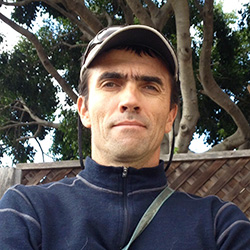
Zach Smith has been to Veracruz many times. He was an official counter at the Veracruz River of Raptors Project for three years, and has led or co-led this tour since 2014.
Zach understands the dynamic migratory raptor flight in Veracruz. He also knows all the right places to look for resident raptors. Zach is an accomplished birder and knows all the other birds occurring in the area as well. Zach is bilingual (English and Spanish), very personable, and is always eager to help others find, see, and identify the birds we encounter in the field.
Zach will bring a state-of-the-art Zeiss Conquest Gavia 85 (30–60×) Spotting Scope and a pair of Zeiss Victory SF 10×42 binoculars.
Tour Showcase
Terms
Raptours, L.L.C. reserves the right to alter this itinerary as necessary, or to cancel the tour prior to departure, with full refund to participants.
Raptours, L.L.C. or its agents may decline to accept or retain any person as a member of this tour at any time.
No smoking will be permitted while with the group, either when indoors or in the field.
Travel medical insurance is strongly recommended.
All passengers will be required to sign a hard copy of the Release of Liability and Assumption of Risk form upon meeting with the tour leader in Veracruz.
No participants will be allowed in the group without a signed copy of the Release of Liability and Assumption of Risk form.
Release of Liability and Assumption of Risk Form
(including Terms)
![]()


